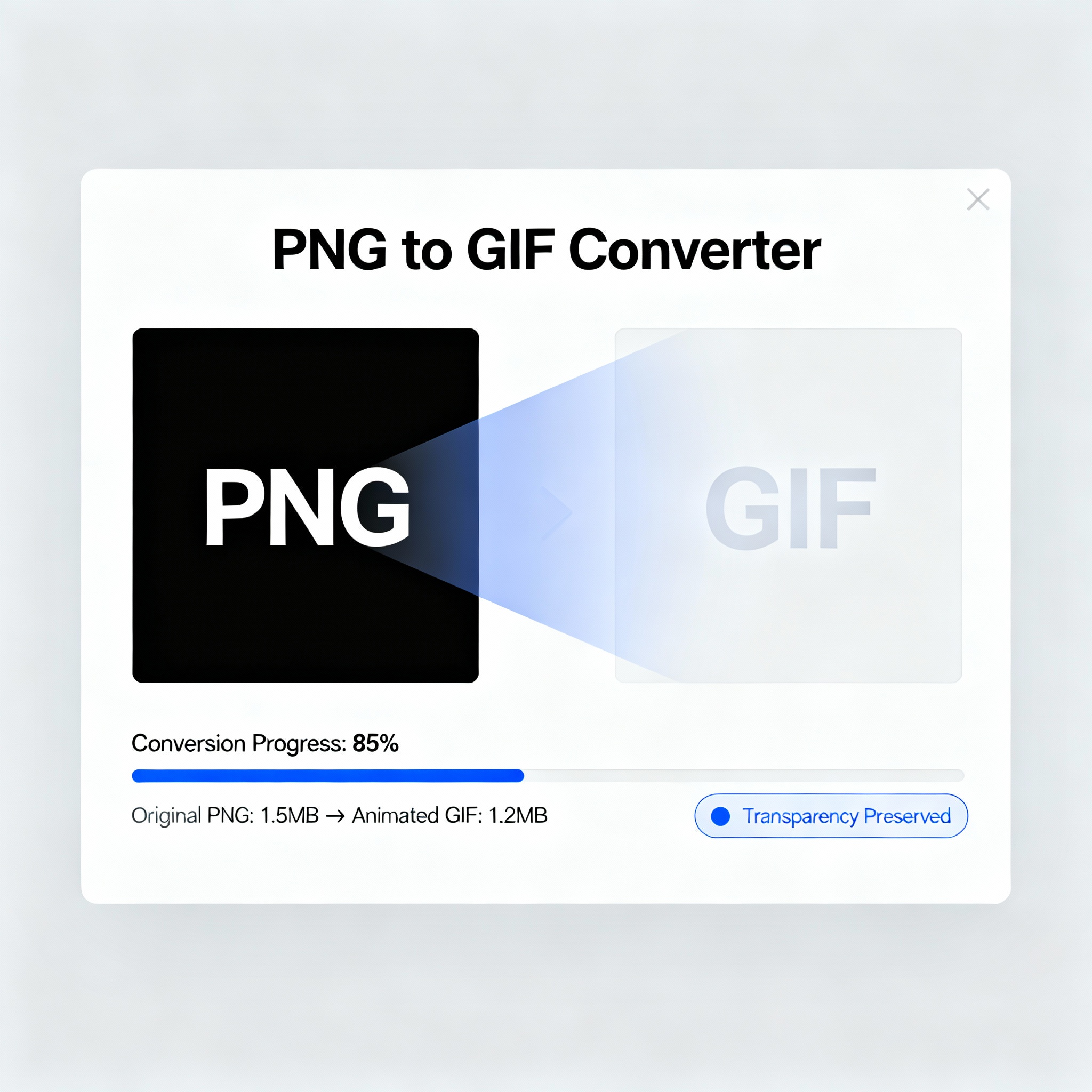
PNG to GIF
Created on 19 October, 2025 • Image Manipulation tools • 27 views • 2 minutes read
Converting PNG to GIF is a practical process for designers, web developers, marketers, and bloggers who want to leverage animation
Converting PNG to GIF is a practical process for designers, web developers, marketers, and bloggers who want to leverage animation, transparency, and optimization in visual content. As two of the most widely used raster image formats, PNG (Portable Network Graphics) and GIF (Graphics Interchange Format) each offer unique advantages. Understanding the process of converting PNG to GIF—and the impact on SEO and user experience—enables smarter content choices for websites, social media, and digital campaigns.
What Is PNG to GIF Conversion?
Definition and Process
PNG to GIF conversion is the act of transforming a static or transparent PNG image into a GIF file, which can be either static or animated. This is accomplished using graphic software, web tools, or batch processing scripts. The process retains much of the original image’s detail, color palette (with GIF’s limitation to 256 colors), and transparency (single-color transparency for GIF).
Common scenarios:
- Creating lightweight, cross-platform visuals for emails or websites.
- Preparing static PNG logos or icons for use in animated banners or memes.
- Leveraging transparency for overlays or watermarks in simple GIF-based site elements.
Advantages for Designers and Marketers
Animation and Visual Engagement
Unlike PNGs, GIFs support frame-by-frame animation—crucial for attention-grabbing banners, call-to-action buttons, product demos, and social media memes. Converting PNG assets to GIF allows creative use of movement to entice users and tell stories.
Transparency and Integration
GIF transparency enables seamless integration of images onto colored or patterned backgrounds, although it is limited to one color being fully transparent. This is ideal for simple badges, overlay graphics, and web icons where lightweight assets matter.
Broad Compatibility
The GIF format is universally supported in all web browsers, email clients, and chat platforms, making converted PNGs suitable for multi-channel campaigns.
SEO Benefits of Using GIFs
Faster Page Loads
- GIFs are generally smaller than full-color PNGs, especially for icons, simple graphics, or short animations, helping sites load quickly.
- Fast-loading pages improve user experience and reduce bounce rates—signals that search engines value highly.
Enhanced User Engagement
- Animated GIFs increase time on page by attracting attention to key features, offers, or instructions. Longer engagement translates into positive SEO metrics.
- Interactive visuals are more likely to be shared and referenced, earning backlinks and driving organic traffic.
Accessibility and Mobile Optimization
- GIF assets are reliably displayed across mobile devices and apps, supporting a consistent experience for all users.
- Lightweight GIFs reduce data usage, appealing to users with slower connections or limited bandwidth.
How to Convert PNG to GIF
- Upload your PNG image to a conversion tool (online or in software like Photoshop).
- Choose desired settings: select transparency color, set animation frames if needed, adjust palette to 256 colors.
- Download or export as a GIF file, ready for website embedding, social media sharing, or marketing use.
Batch conversion tools allow multiple PNGs to be processed simultaneously, saving time for large projects.
Best Practices
- Use GIF for simple graphics, lightweight banners, and short animations; retain PNG for complex, high-quality images or multilevel transparency.
- Compress GIF files for minimal file size without sacrificing visual clarity.
- Always add descriptive alt text and consider schema markup for SEO impact.
Conclusion
PNG to GIF conversion is a strategic way to leverage lightweight, animated, and universally compatible visuals for digital success. By optimizing assets for fast loads, engagement, and cross-platform display, you enhance both SEO and user experience—strengthening your website or campaign’s reach and performance.
Popular posts
-
GIF to BMPImage Manipulation tools • 353 views
-
GIF to WEBPImage Manipulation tools • 256 views
-
GIF-to-PNGImage Manipulation tools • 190 views
-
SHA-3/512 generatorConverter tools • 152 views
-
GIF to JPGImage Manipulation tools • 122 views